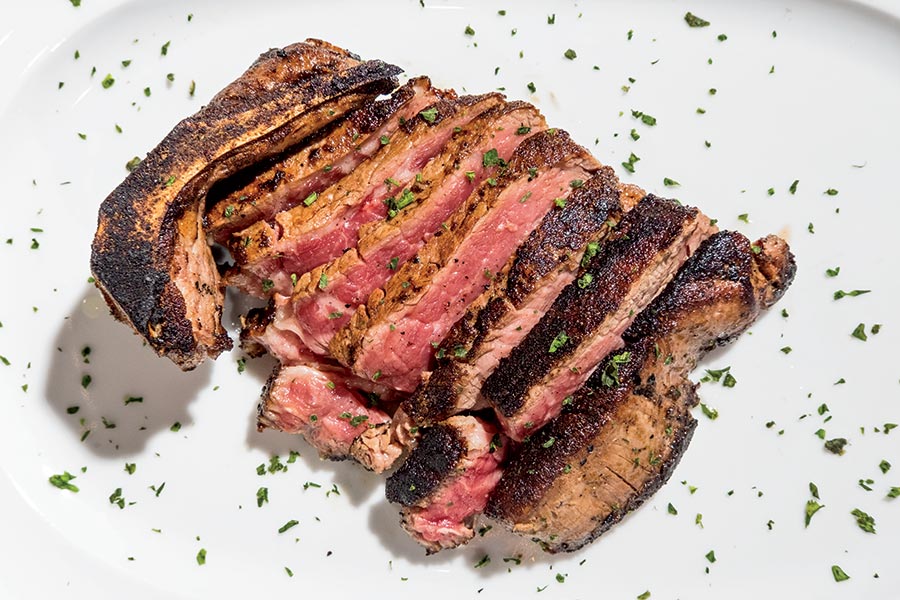I grew up in Kansas, where red meat is a religion. Practicing my faith in the family dining room, I learned to expect my beef in massive slabs—anything less was just a snack. I imagined meat as prey and sliced it with a big knife, reclaiming some hint of the brash and bloody brutality of my forebears.
Now? I’m in a cushy leather chair at Mastro’s Steakhouse, nibbling slices of perfectly medium-rare beef about the size of dominoes. The wet-aged 18-ounce filet comes out of the kitchen that way. Were my grandfather, a man who ate rare steaks the size of snare drums and lived to be 95, alive to witness this, he would slap the plate out of the server’s hands as soon as he saw it.
But that’s where we’re at today. Four of the restaurants on this year’s list—Mastro’s, GT Prime, Boeufhaus, and Steak 48—carve their beef before it’s brought to the table. Why? “It allows people to try different cuts and not have to commit to one steak,” says Kevin Boehm, an owner of GT Prime. “It also mirrors the way people are eating these days: in a more healthy, sensible fashion.”
Maybe Boehm is onto something. Every medium-rare nugget on GT Prime’s sampler has a charred edge and a juicy center. Comparing the mildness of the beef tenderloin with, say, the buttery strip loin of American wagyu sparks new insights about both. And the meal’s rhythm downshifts from a carnivorous frenzy into something sane and relaxed. Yes, being served dainty portions comes at the cost of satisfying that primal, meaty urge, but I was never much of a hunter-gatherer, anyway.



